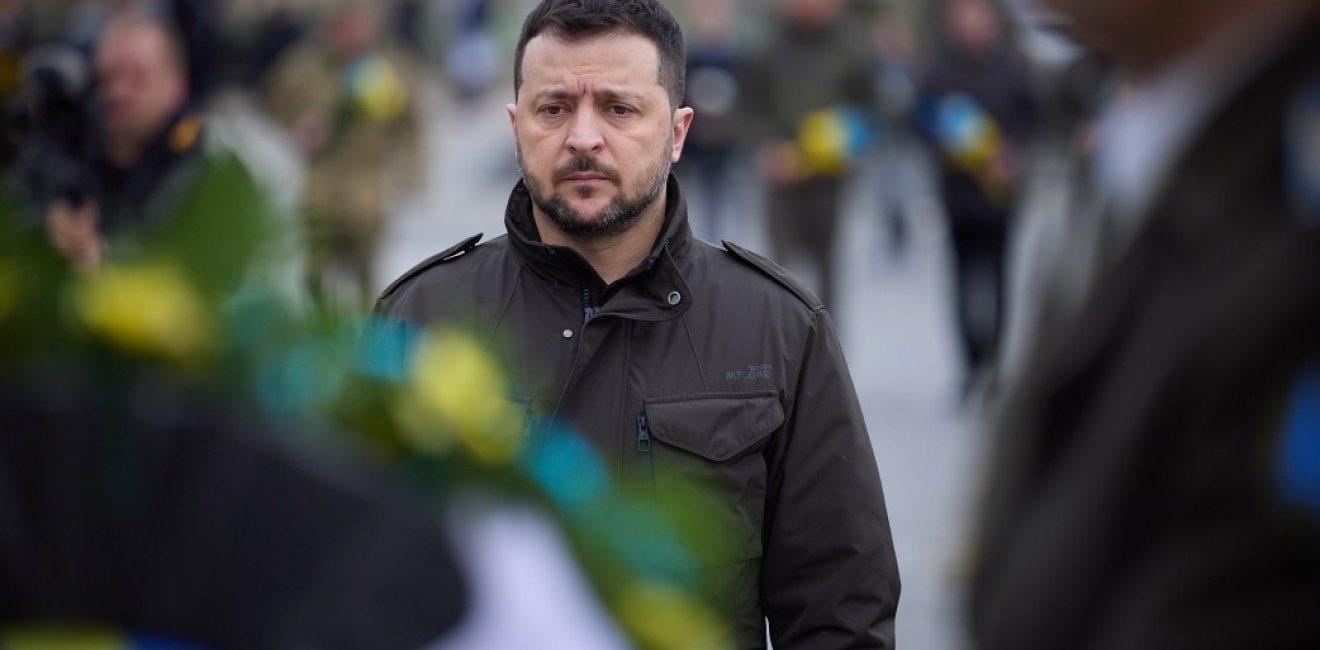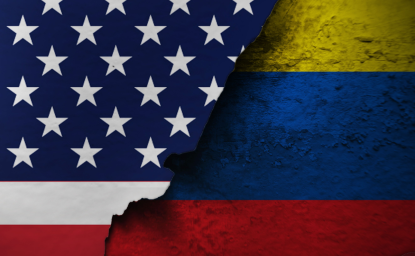Members of the Transatlantic Writers’ Group analyze the evolving dynamics of transatlantic cooperation as the full-scale Russian invasion of Ukraine enters its third year. The security environment in Europe has irrevocably shifted, with repercussions on the European Union, NATO, and the future of Ukraine’s trajectory towards European integration. Tough questions abound–with few clear answers.
How has the Russian invasion of Ukraine impacted the European Union?
The second anniversary of the full-scale Russian invasion of Ukraine finds the European Union more committed to security and defense, but also at a time of immense flux and uncertainty. By opening accession negotiations with Ukraine, the EU enlargement process takes on new geopolitical dimensions–much in line with the goals of von der Leyen’s geopolitical Commission rhetoric and Borrell’s vision of a geopolitical EU.
However, all this is happening at the cusp of significant political changes both inside and outside the EU. In addition to the European Parliament elections, changes are coming to the Commission and the European Council leadership. These shifts are expected to take place as Hungary, the “problem child” of the EU, assumes the rotating Council presidency in July. In the meantime, the US will be going through its election cycle, where a repeat of the 2020 candidates’ configuration appears very probable.
A commitment to becoming a geopolitical EU is essential in the face of new security threats–in particular as new networks of malign actors, namely Russia, Iran, and North Korea work together in unprecedented ways–but this will be a difficult road to walk. It requires a strong EU leadership and a clear vision for the future that gives center stage to the security and defense of each member state–current and future. It is also time to consider how this can be achieved. What will reality look like at next year’s anniversary of Russia’s most recent brutal attack on Ukraine’s sovereignty?
How has the war impacted EU enlargement?
In December 2023, accession talks began for Ukraine to become a member of the European Union. Ukraine initially applied for EU membership in February 2022 and was swiftly granted candidate status as a show of good faith while Ukraine fought a war for its very survival. Although the pace of Ukraine’s EU candidacy is laudable, it has been met with skepticism in the Western Balkans, where progress has been slow, seriously questioning the credibility of the enlargement process.
The EU promised future membership for the Western Balkan countries at the Thessaloniki Summit in 2003. The promise seemed highly credible bolstered by the EU‘s significant expansion a year later, welcoming 10 new countries and in 2007, Romania and Bulgaria. Afterwards, the appetite for enlargement started to diminish (Croatia being the last country to join in 2013) and was further exacerbated by a series of crises, including the migrant crisis, Brexit, the unlawful Russian annexation of Crimea, and the COVID-19 pandemic. The EU entered a phase of enlargement fatigue, and consequently, the accession process for the six Western Balkan countries encountered significant challenges, leaving these countries in a protracted state of anticipation with no urgency from the EU to enlarge further.
Russia’s full-scale invasion of Ukraine in 2022 marked a pivotal moment, pushing the EU to reassess its enlargement policy. Enlargement was back on the table for the first time in a decade. Once again, the EU found itself compelled to take action, not out of a desire to be proactive but in response to the direct threat posed by Russia. In November 2023, the European Commission (EC) recommended opening EU membership talks with Ukraine and Moldova, but there was little to offer for the Western Balkan countries. The Western Balkans, while happy for the Ukrainian and Moldovan people, wondered whether they were still being seriously considered for EU membership or if they would be left in limbo. This highlighted the complex interplay between geopolitical events and the EU's enlargement considerations.
The prospects of Ukraine's integration into the EU appear to be driven more by geopolitical factors than by actual implementation of policy reforms. This poses a risk to the overall credibility of the EU enlargement process. Furthermore, there is a possibility that Ukraine may find itself caught in a situation akin to the Western Balkans, where countries face prolonged waiting periods with uncertain outcomes. In the end, Ukraine continues to pursue and prioritize reforms to align with the EU in pursuit of membership, even as it fights for survival.
Is the EU able to step up as a security actor to support Ukraine?
European countries have allocated an unprecedented amount of military support to Ukraine over the last two years—the latest data by Kiel Institute even shows EU countries have now surpassed the United States when it comes to committed military aid. Germany, the Nordic and Eastern European countries have been leading in these efforts.
However, the strategy of only building national defense budgets has exposed Europe’s defense procurement and production limitations. As most of the military equipment now comes from the United States, Europe is seeking to overcome fragmentation and scale-up defense production to continue supporting Ukraine’s military objectives. Several senior European officials have therefore started looking for answers at the EU level.
Efforts to deepen EU defense cooperation are not new but have been amplified since the Russian invasion of Ukraine. There have been some significant developments already prior, such as the Permanent Structured Cooperation (PESCO), the European Defense Fund (EDF) and the European Peace Facility (EPF), however with limited results. In the last two years, the EU has built upon that. The European Peace Facility was just topped off with additional 5 billion euros and on February 27, Internal Market Commissioner Breton is expected to unveil the highly expected European Defense Industry Strategy (EDIS). Most recently, Charles Michel stated the EU could invest over 600 billion euros in defense industries over the next 10 years. While greater European defense capabilities might not be tangible yet, a political will seems to be developing to invest more and invest smarter into a common European defense, including procurement taking place on the EU level. In a recent visit to Sweden, French President Emmanuel Macron called for the EU to step up its capabilities, saying “when it is about designing our architecture of security - we have to be the one to decide.”
The EU has been working intensely on initiatives and strategies to build up its defense production capacities. These however are tools that require extensive investment and time to render results. While these steps will likely strengthen Europe’s defense capabilities in the long run, the question of short-term military support for Ukraine still looms large.The recent announcement by Joseph Borrell, that the highly ambitious Act in Support of Ammunition Production (ASAP) will not deliver the needed 1 million ammunition rounds to Ukraine by March shows there is still much work ahead. Europe is not yet ready to fill a potential gap left by the United States, but is nevertheless on track to be a more capable and stronger supporter of Ukraine.
Will Ukraine join NATO?
Although NATO has confirmed the Euro-Atlantic future of Ukraine, the actual progress has been notably minimal. This can be attributed to Ukraine's ongoing war and concern of greater escalation, especially on the part of the United States and Germany. As NATO approaches its 75th anniversary and with the Washington Summit a unique opportunity for bold moves, NATO should recognize a mere declaration of support will not suffice and should instead offer to begin Ukraine’s accession process.
In June 2020, Ukraine was granted the Enhanced Opportunities Partner (EOP) status due to successes in reforming the defense and security sector of Ukraine since 2014. After the Russian full-scale invasion of Ukraine, Sweden and Finland decided to apply for NATO membership. From a Ukrainian perspective, the EOP status lost its credibility and importance for Ukraine. At the Madrid NATO summit in June 2022, a new Strategic Concept was adopted, where Russia was mentioned as the main security threat for the Euro-Atlantic area. Also in Madrid, NATO Trust Funds that have been launched since 2014 were combined and strengthened in the Comprehensive Assistance Package. On 30 September 2022, after sham Russian “referendums” in the temporarily occupied territories of Ukraine, Ukraine’s political leadership prepared an application for accelerated accession to NATO.
NATO provides Ukraine with non-lethal support and plays a coordination role (hosting of the US-led Ukraine Defence Contact Group meetings). During the Vilnius summit in July 2023, the NATO-Ukraine commission, formed in 1997 with the signing of the Charter on a Distinctive Partnership between the North Atlantic Treaty Organization and Ukraine, was transformed into the NATO-Ukraine Council. It’s one more step in deepening the political dialogue and opportunity of attending the North Atlantic Council by Ukraine.
As the war in Ukraine persists, NATO member states remain committed to offering commitments and bolstering support for Ukraine. The "as long as it takes" phrase has become a slogan that encapsulates their unwavering support and dedication to Ukraine. Recognizing that beyond military, financial, and humanitarian aid, political backing is crucial for sustaining morale and advancing transatlantic ambitions among the Ukrainian people, and that the West continues to emphasize its solidarity. The UK set the example of security commitment for G7 and NATO countries by signing the security agreement with Ukraine January 12. The real security guarantees Ukraine could get only after joining NATO. The latter depends on the political positions of Allies (particularly the USA and Germany) and the reform of the security and defense sector of Ukraine by NATO standards with civil control of the army, defense procurement, operations planning, and army management.
If public support for Ukraine starts to wane, however, Ukraine will face a reality check. The sustained backing it is counting on from its Western partners – including through security agreements – also needs support from the citizens of those countries. Clearly, this is where both Ukraine and Western governments need to ramp up engagement with the public, and show why defense of Ukraine affects broader European and transatlantic security.
What does a post-conflict Ukraine reconstruction effort look like?
A post-war Ukraine reconstruction effort seeks to overhaul the country’s society and economy through infrastructural and institutional modernization. This process will likely be comprehensive and prolonged. Reconstruction will need to focus on a wide range of issues covering different layers of the country. Governance is an area incentivized by possible future EU membership, where government corruption is still a legitimate question in the country, although Russian disinformation will need to be effectively combatted. National and local systems would also need support, utilizing resources bolstered through international donors, such as a joint US-EU collaboration effort for Ukraine to succeed.
Finance will be one of the biggest issues in post-war Ukraine, with reconstruction costs estimated to be around $349 billion and steadily increasing, with some 10-year plans proposing sending $750 billion over several years, encompassing hundreds of projects. To help finance some of these projects, Ukraine, the EU, Canada, and others proposed utilizing frozen Russian assets. Addressing the divergent needs of groups throughout Ukrainian society will be needed through a multi-stakeholder process. This can be achieved through ensuring broad support in the private and public sectors. Reconstruction will likely take decades.
Efforts to de-mine the areas currently under Russian occupation will also likely take decades to make clear for human habitation. Resources and services will also be needed for families affected by the ongoing war. Drawing historical lessons from the Balkans Wars in the 1990s could also be useful in charting Ukraine’s future in a post-conflict environment. For the future of Ukraine, responsible governance must take hold in areas needing the most support to allow reconstruction to have a lasting impact, mainly in the eastern and southern oblasts where the fighting has been the most destructive. However, If Russia maintains de-facto control of the illegally annexed and occupied territories (Crimea, parts of Donetsk, Kherson, Zaporizhia, and Luhansk oblasts), Western reconstruction assistance will focus on regions Ukraine controls.
Can transatlantic support for Ukraine hold amid the heightened tensions in the Middle East?
The unwavering military support for Ukraine in European capitals has shown signs of weakening. The recent declaration by the new Prime Minister of Slovakia rejecting military aid for Ukraine, carries a significant political weight in the context of the collective European response to Russia’s aggression, even though Slovakia’s impact on the overall military aid to Ukraine is relatively limited. Furthermore, Hungary has previously obstructed vital funds destined for the European Peace Facility. Consequently, maintaining unified military support for Ukraine is proving increasingly difficult.
The conflict in the Middle East adds another layer of complexity. Theconflict in October 2023 unequivocally drew attention away from Ukraine. The United States and its allies must now strike a balance between fulfilling its promises to Ukraine whilst deterring further escalation in the Middle East.
On January 22, 2024, the US Department of Defense’s deputy press secretary highlighted Washington’s growing reliance on its European allies to compensate for the shortfalls in US lethal aid to Ukraine. This has not gone unnoticed in Kyiv, as President Zelensky continues to advocate for his country’s urgent need for continued munitions to maintain their war effort.
Furthermore, Houthi attacks on commercial shipping in the Red Sea have elicited direct military action by the US and UK. Rejecting the Houthi claim that attacks are in direct response to Israel’s invasion of Gaza, both countries perceive them as part of wider regional tensions. Despite being the only Western powers to conduct airstrikes in Yemen, the US and UK face growing interest from several EU member states in contributing to enhanced regional maritime security. Italian Foreign Minister Antonio Tajani has recently called for an expansion of the European maritime mission to the Red Sea.
Middle East tensions, US and EU political debates, and the increased European presence in the Red Sea pose serious challenges to the allied approach for ensuring Ukrainian security. As attention shifts towards the Middle East, there's a growing concern that the urgency of addressing Ukraine's defense may lose prominence on the global political agenda.
What will 2024 and beyond look like for Ukraine?
The impact of Russia’s full-scale invasion of Ukraine on transatlantic security remains no less salient as the fight enters its third year. Ukraine has been fighting against Russian aggression for a decade now, since Russia first invaded Crimea in 2014. Wavering support in some capitals–especially as a new conflict began in the Middle East last fall and widens to the Red Sea–will hopefully be a short-term side effect and not an enduring trend. Ukraine needs the continued support of transatlantic partners to win its war with Russia. Kyiv cannot afford the nation’s defense to become a political talking point, where essential aid is constrained by domestic political rhetoric. As demonstrated by the response to last year’s counter offensive, future aid risks becoming increasingly contingent on Ukraine’s performance on the battlefield. This dynamic will only benefit Russia, which is counting on outlasting international support for Ukraine. Pertinent questions are being asked, such as what will the end of the war look like, what is the path for Ukraine’s future in the EU and NATO, and how does Ukraine rebuild after a devastating Russian invasion that hasn’t abated since 2014?
NATO’s future credibility and effectiveness as an instrument of collective defense hangs in the balance. 2024 is a critical year: a year when capabilities for Ukraine matter more than ever, a year when elections put security in the spotlight, a year when NATO marks 75 years as an effective Alliance. The decisions NATO leaders make at the July Summit will shape security – for the US, Europe, and Ukraine – for years to come. Inaction is also an action.
Authors





Postdoctoral Fellow, Johns Hopkins School of Advanced International Studies





Global Europe Program
The Global Europe Program is focused on Europe’s capabilities, and how it engages on critical global issues. We investigate European approaches to critical global issues. We examine Europe’s relations with Russia and Eurasia, China and the Indo-Pacific, the Middle East and Africa. Our initiatives include “Ukraine in Europe”—an examination of what it will take to make Ukraine’s European future a reality. But we also examine the role of NATO, the European Union and the OSCE, Europe’s energy security, transatlantic trade disputes, and challenges to democracy. The Global Europe Program’s staff, scholars-in-residence, and Global Fellows participate in seminars, policy study groups, and international conferences to provide analytical recommendations to policy makers and the media. Read more

Explore More
Browse Insights & Analysis
The OSCE is a Good Value for America





